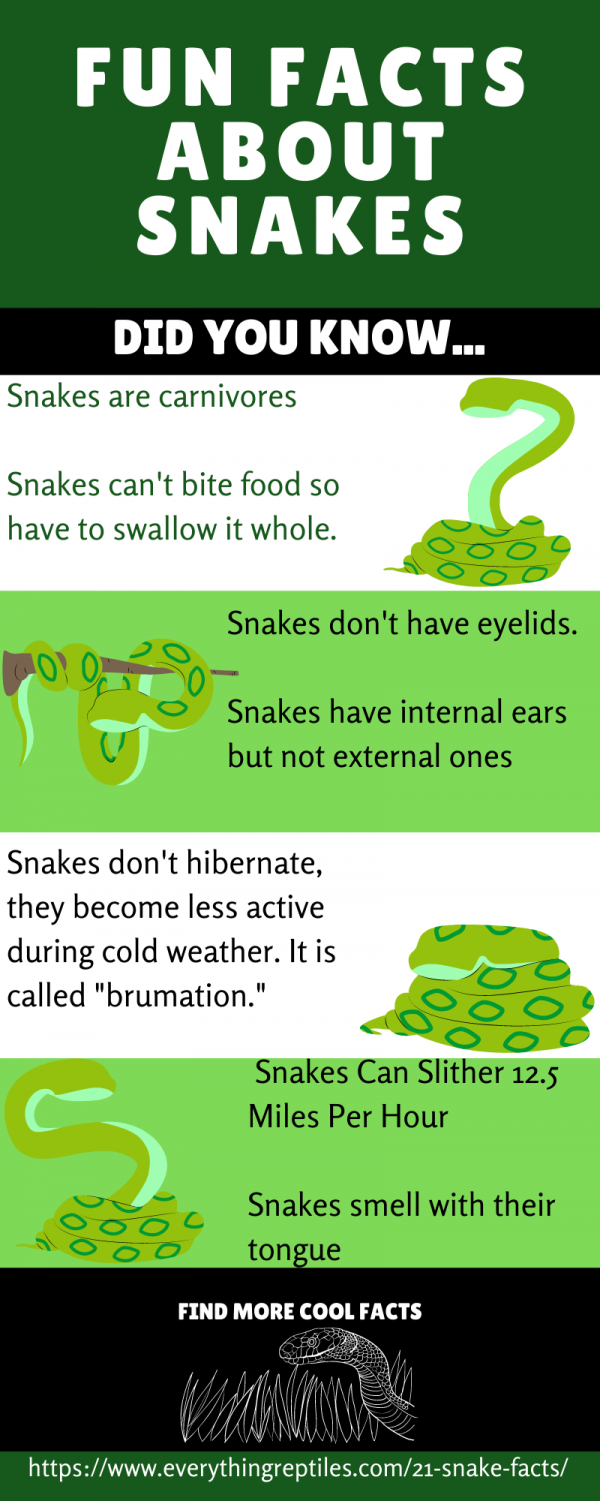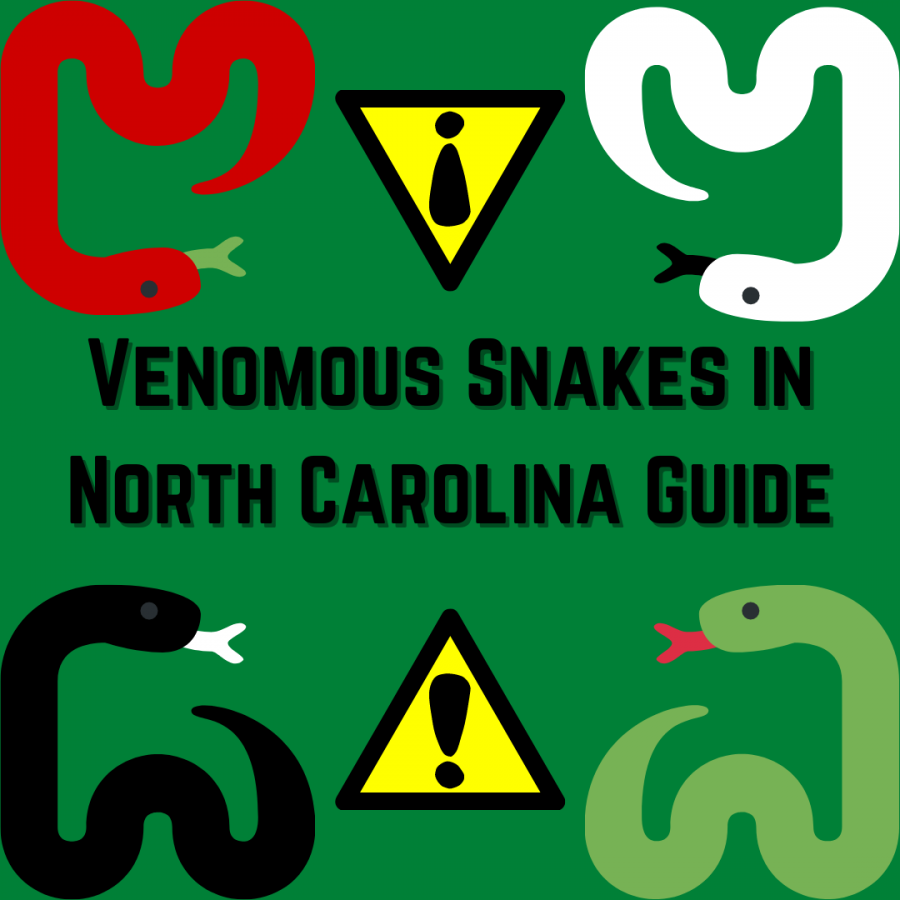Venomous Snakes of North Carolina Guide
Read-up on venomous snakes in North Carolina to keep summer safe and fun!
How can you differentiate the venomous and non-venomous snakes in North Carolina?
With the warm weather of spring and summer months, North Carolinians know anytime they are outside to look out for bees, wasps, mosquitos, ants, ticks, and most importantly things that slither. Of the 38 species of snakes in North Carolina, the majority are non-venomous and not aggressive toward people unless threatened. Especially in the springtime, when snakes are becoming more active and we are more likely to see them, it’s good to know the venomous (sometimes referred to incorrectly as poisonous) snakes from the harmless ones, which are beneficial to keep around.
There are six venomous snakes found in North Carolina: the copperhead, the cottonmouth (also called water moccasin), the Eastern diamondback rattlesnake, the timber rattlesnake, the pigmy rattlesnake, and the Eastern coral snake. Four of the six are protected species in North Carolina, and should not be handled or disturbed: the Timber and Pigmy Rattlesnakes are both Species of Special Concern, while the Eastern Diamondback Rattlesnake and Eastern Coral Snake are both endangered.
North American copperhead is a common species of venomous snake found in the eastern and central United States. Luckily, their venom is not very powerful, and bites are rarely deadly; children, the elderly, and immunocompromised people are most at risk. Copperhead bites can be severe, but about half of copperhead bites result in only mild swelling and pain. Adult copperheads grow to about 3 feet long, and they are found all over North Carolina. They are brownish in color with an hourglass-shaped pattern, which looks like a Hershey Kiss.
Cottonmouths or Water Moccasins are found mostly in the eastern part of North Carolina, and prefer freshwater environments (but can also be found on land). The name cottonmouth is idealized by the white interior of their mouths. Cottonmouth snakes have dark bands on dark or olive skin but are most well known for their mouths’ white, cotton-like interior. Young cottonmouths can be lighter in color and resemble copperheads. Older cottonmouth snakes are often completely dark and with no pattern. Adult cottonmouths often grow to be about 3-4 feet in length. The bite severity of a cottonmouth is similar to a copperhead. A myth about cottonmouths is that they get very aggressive when someone comes near them, however cottonmouths attack when they are very stressed.

The Eastern Diamondback Rattlesnake has gray or yellowish skin with a dark diamond pattern outlined in black. They have large, broadheads with two light lines on the face. These snakes are known for the bone-chilling rattle sound they make. Bites from rattlesnakes are more severe than bites from copperheads or cottonmouths and are considered medical emergencies. The Eastern diamondback rattlesnake is the heaviest, though not the longest, venomous snake in the Americas, and it is the largest rattlesnake in the world. These snakes can weigh up to four or five pounds and typically grow to about 4-5 feet in length, the largest ever recorded was 8 feet long. They are found in the southeastern parts of North Carolina, preferring sandy, coastal regions.
Pygmy rattlesnakes have gray, pinkish, or red skin with a dark, spotted pattern. Pigmy rattlesnakes do rattle, but the rattle sounds more like a buzz. They grow only to about 1-2 feet in length, and they are found in the southeastern part of North Carolina, particularly in forests. These snakes are classified as pit vipers because of facial pits found below and between the eye and nostril on both sides of the head. The pit is highly sensitive to infrared radiation (heat) and serves as a direction finder in locating warm-blooded prey or predators.
The Timber Rattlesnake is well-camouflaged. It has two color phases, yellow (which can also appear light brown or gray) with dark bands, and black with less noticeable dark bands. A timber rattlesnake has “pits” on either side of its face below its eyes, which are temperature sensitive and help it sense when prey or predators approach. These snakes make a sort of hiss rattle sound using segments that knock against each other to produce a buzzing sound when the snake holds its tail vertically and vibrates the rattle Timber rattlesnakes, which grow to about 4 feet in length, can be found throughout North Carolina, preferring forests.
The Eastern Coral Snake is extremely rare in North Carolina and is considered endangered, but they are quite venomous. Coral Snakes have a distinct red, yellow, and black banding that makes the presence of venom known to potential predators. The eastern coral snake has a bright body pattern of red, yellow, and black rings in which the red and yellow rings touch each other. They have smooth scales and the anal plate or scale is usually divided. The coral snake closely resembles the scarlet kingsnake (which is harmless), but there’s an easy way to tell them apart. Just remember this rhyme: “Red touches black, a friend of Jack; red touches yellow, kills a fellow.” Coral snakes live in sandy areas near the South Carolina border and stay underground most of the time.
Contact the Carolina’s Poison Control Center for more information: 1-800-222-1222













